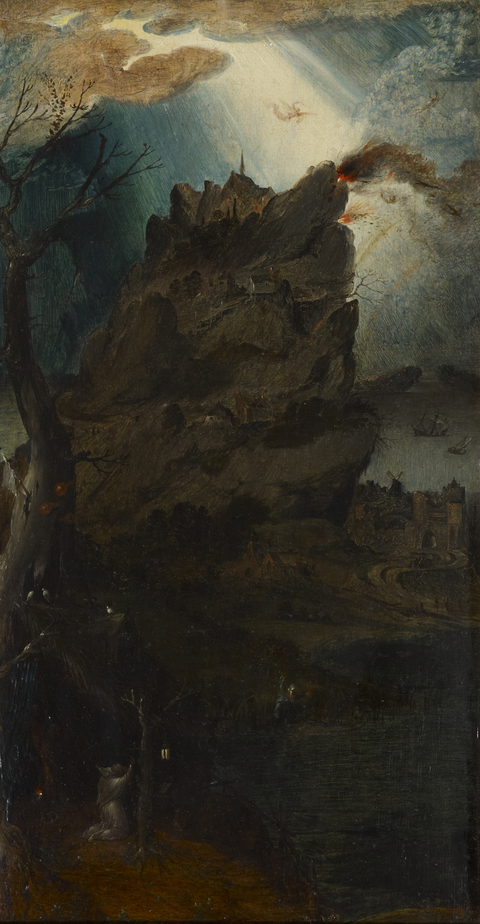Marks, Inscriptions, and Distinguishing Features
None
Entry
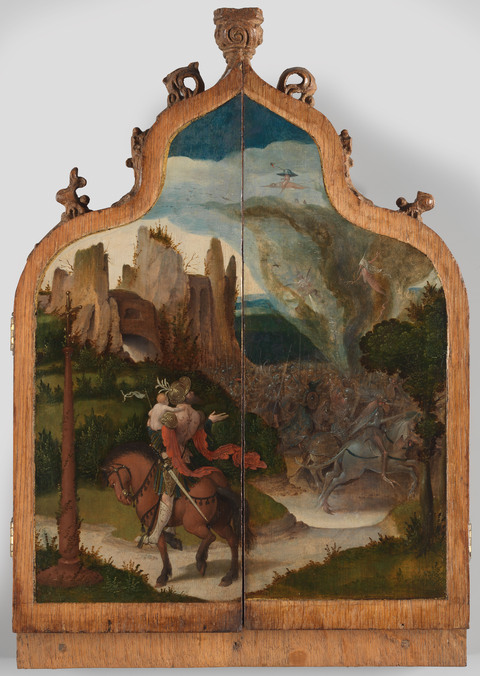
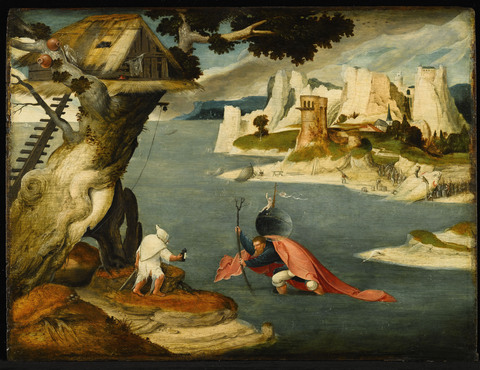
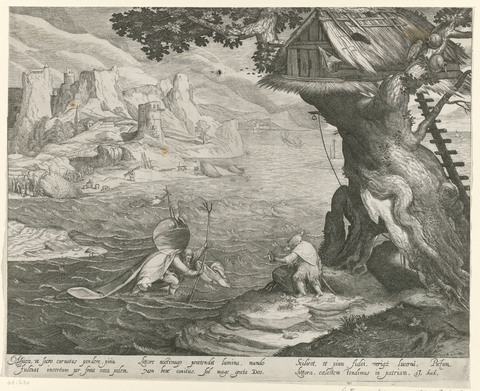
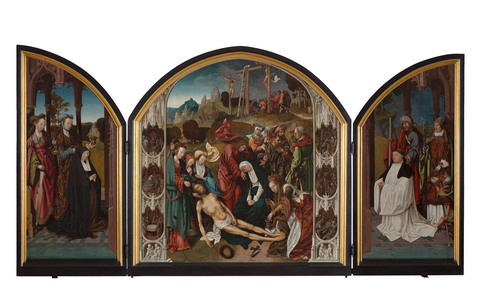
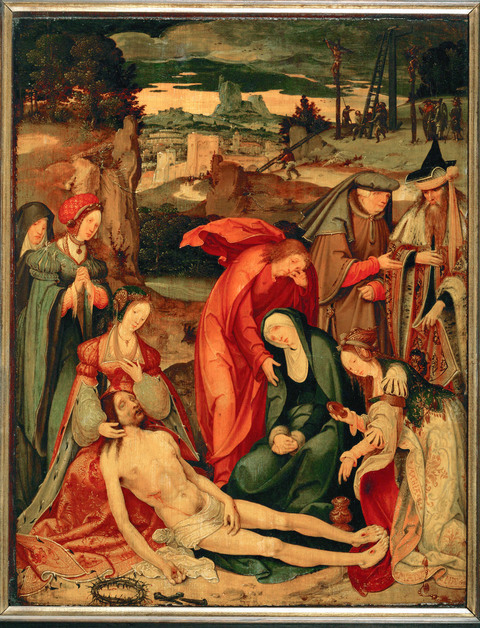
Author
Provenance
(Alfred Strauss, with Jacob M. Heimann, Los Angeles) by 1949;8
G.H.A. Clowes, Indianapolis, in 1949;
The Clowes Fund, Indianapolis, from 1958–2017, and on long-term loan to the Indianapolis Museum of Art since 1971 (C10013);
Given to the Indianapolis Museum of Art, now the Indianapolis Museum of Art at Newfields, in 2017.
Exhibitions
John Herron Art Museum, Indianapolis, 1950, Holbein and His Contemporaries, no. 10;
John Herron Art Museum, Indianapolis, 1959, Paintings from the Collection of George Henry Alexander Clowes: A Memorial Exhibition, no. 11;
Indiana University Museum of Art, Bloomington, IN, 1963, Northern European Painting—The Clowes Fund Collection, no. 24.
References
Holbein and His Contemporaries, exh. cat. (Indianapolis, IN: John Herron Art Museum, 1950), no. 10;
Gustav Glück, “Peter Bruegel the Elder and the Legend of St. Christopher in Early Flemish Painting,” Art Quarterly 13 (Winter 1950): 36–47, figs. 1–3;
Gustav Glück, Das grosse Breugel-Werk (Vienna: Schroll, 1953), 14, 35–36, cat. no. 2 and pl. 2;
Paintings from the Collection of George Henry Alexander Clowes: A Memorial Exhibition, exh. cat. (Indianapolis, IN: John Herron Art Museum, 1959), no. 11;
Northern European Painting—The Clowes Fund Collection, exh. cat. (Bloomington, IN: Indiana University Museum of Art, 1963), no. 24.
Piero Bianconi and Robert Hughes, The Complete Paintings of Bruegel (New York: Harry N. Abrams, 1967), 87–88;
A. Ian Fraser, A Catalogue of the Clowes Collection (Indianapolis: Indianapolis Museum of Art, 1973), xli, 108–9.
Notes
-
Gustav Glück, “Peter Bruegel the Elder and the Legend of St. Christopher in Early Flemish Painting,” Art Quarterly 13 (Winter 1950): 36–47; Gustav Glück, Das grosse Breugel-Werk (Vienna: Schroll, 1953), 35–36. ↩︎
-
Statement by A. Ian Fraser, 18 August 1972, File C10013, Clowes Registration Archive, Indianapolis Museum of Art at Newfields. ↩︎
-
Max J. Friedländer, Early Netherlandish Painting: The Antwerp Mannerists, Adriaen Ysenbrant (Leiden: A.W. Sijthoff, 1974), 37. ↩︎
-
Max J. Friedländer, Early Netherlandish Painting: The Antwerp Mannerists, Adriaen Ysenbrant (Leiden: A.W. Sijthoff, 1974), 37. Marc Rudolf De Vrij, Jan Wellens de Cock: Antwerp Mannerist Associate (Zwanenburg: M.R.V. Publishers, 2009). This painting was sold at Sotheby’s, London, on 8 December 2004, lot no. 7. A closely related version of this painting was sold at Sotheby’s, London, on 7 July 2021, lot no. 4; in the accompanying essay in the sale catalogue, a new theory was proposed by Jan Piet Filedt Kok, Suzanne Laemers, and Margreet Wolters, currently collaborating on a study of the subject of St. Christopher and the identity of this enigmatic painter. They suggested the term “Pseudo Jan Wellens de Cock” to describe a group of anonymous painters active in Antwerp and/or Leiden in the 1520s and 1530s. See https://www.sothebys.com/en/buy/auction/2021/old-masters-evening-sale/saint-christopher-carrying-the-christ-child-in-an. ↩︎
-
Max J. Friedländer, Early Netherlandish Painting: Lucas van Leyden and Other Dutch Masters of His Time (Leiden: A.W. Sijthoff, 1973), 41–42, and Max. J. Friedländer, Early Netherlandish Painting: The Antwerp Mannerists, Adriaen Ysenbrant (Leiden: A.W. Sijthoff, 1974), 37. ↩︎
-
Max J. Friedländer, Early Netherlandish Painting: The Antwerp Mannerists, Adriaen Ysenbrant (Leiden: A.W. Sijthoff, 1974), 37. Also Max J. Friedländer, Early Netherlandish Painting: Lucas van Leyden and Other Dutch Masters of His Time (Leiden: A.W. Sijthoff, 1973), pls. 64–65. ↩︎
-
Max J. Friedländer, Early Netherlandish Painting: The Antwerp Mannerists, Adriaen Ysenbrant (Leiden: A.W. Sijthoff, 1974), 40. ↩︎
-
Bill of Sale, Strauss, with Heimann, to Clowes, 10 June 1949, File C10013, Clowes Registration Archive, Indianapolis Museum of Art at Newfields. The purchase of this painting by Clowes was in settlement of a lawsuit he had filed against Heimann. See Files: Chadbourne, Hunt, Jaeckel & Brown, New York, Correspondence Files, Clowes Registration Archive, Indianapolis Museum of Art at Newfields. ↩︎
